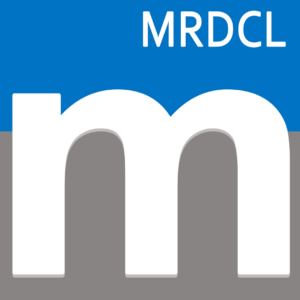Does it matter if your software for tabulations (or crosstabs, crosstabulations, if you prefer) differs from any other? We are not the first business to claim that our software is unique – everyone wants their product to be unique, of course. This article explores why we consider MRDCL to offer you unique advantages (the sales bit, you might say), explaining why it is different and also identifying the disadvantages (the very-much-not sales bit, you might say). I’ll also comment where MRDCL is not unique but, perhaps, one of a small band. Before I start, if you are sceptical about any of my thoughts, please drop me an email, and I will answer your question. So, let’s get started.
Scripting languages for tabulations
In the 1990s and before, scripting languages were the norm for producing crosstabs. As GUI (graphical user interface) software improved, some crosstab analysis work moved to easier-to-use menu-driven systems. That made sense. Why use a tool that requires more skill if it is not needed? Interestingly,
The scripted tabulations market
First of all, MRDCL is certainly not unique in the scripted tabulation market – uniqueness follows later in this article! However, there are very few players in this space. Quantum is the dinosaur that dominated in the 1990s and beyond even though development ceased well before this millennium. Merlin and Uncle have been in existence for a similar length of time as MRDCL and are most definitely scripting languages, so MRDCL cannot claim any uniqueness on that front. Both Merlin and Uncle are feature-rich and capable of producing most crosstabs you will ever want. But, there is much more to consider, in my view.
Why are there no new scripted tabulation languages?
People have asked me several times why there are no new scripted tabulation languages. The answer is a simple one – cost. The cost of developing a product that can match Quantum, which has not been upgraded in 25 years, would need considerable investment. I think Quantum is arguably the best piece of software I have ever seen. Some companies still use Quantum 25 years after SPSS froze the product; this is, quite rightly, a testament to its brilliance. Now, you could claim that scripted tabulations have not moved on in 25 years, but that would be a severe misjudgement, in my view.
Programming vs scripted tabulation software
Before moving on, some platforms allow you to use a programming language for more complex needs. In other words, they have core tools available for many requirements. Beyond that, you write programs to process, analyse or present data. Ruby and Confirmit, for example, adopt this approach, albeit with limitations. This solution may be good enough if you have a sufficiently skilled and, probably, large team, or it may work if you have hit an occasional limitation, which the software supplier can provide ‘magical code’ that solves a short-term solution. However, it can leave you largely unsupported, particularly if you have complex programs created by someone who leaves or changes roles. A professional scripted tabulation tool should not need to have an escape hatch; MRDCL doesn’t and has successfully met every user’s needs.
Completeness of software products
Products like MRDCL, Quantum and Merlin can reasonably claim to produce more or less any tabulations you want within the software. But, this still does not provide evidence of uniqueness, so we need to dig further. Completeness is essential, but how you achieve ‘completeness’ and how highly you value your data comes to the fore. What do I mean by this? I mean that the role of tabulation has moved on in recent years. Tabulations used to be the end product, but now creating variables, managing data and pushing results or data to the required place is paramount.
Focus on productivity
At or around the beginning of this millennium, there was a significant shift in the balance between the cost of humans and computer power. Computers have become cheap, cheaper than a mobile phone in many cases, while, around the world, the cost of labour has increased. This change led us to spend the first ten years of the 2000s improving the productivity MRDCL users enjoy. We don’t believe anyone in the tabulation market matched us in this area. We improved productivity for users of MRDCL by 30% on most projects and up to 70-80% on certain types of projects, particularly complex ones with
Focus on data manoeuvrability
Market research has changed. Surveys are, in many cases, smaller and faster, using a vast number of different tools to collect the data. Data now needs to be agile. It is increasingly more important to move data from and to wherever you need it. Now, if you can handle everything you need to do with your data within one platform, that’s great. MRDCL certainly doesn’t offer this as it has no data collection capability. However, taking data from any source and delivering it to any platform is the ideal. In practice, this is impossible; it’s just an ideal. This goal means that you should adopt software that makes data management as smooth as possible while allowing you to offer clients as much flexibility as possible. In this respect, we feel that MRDCL again is unique in this direction, particularly among higher-end tabulation software providers.
Survey automation
Many software companies are talking about automation being the key to success. That’s fine, but I prefer to look at this differently. Automation is no big deal if you run a small survey, which is simple. It’s a nice-to-have, but it’s questionable whether it increases sales or cuts costs significantly. I prefer to look at what is technically possible in software and how easy it is. Semi-automation is good enough if it doesn’t incur high staff costs or increased error risks. The important thing is being able to take data (easily), process it (easily) and deliver it (easily).
Building MRDCL into your system
Another development that MRDCL has honed in recent years is how some companies now use MRDCL as an engine within their platforms or systems. Some companies use MRDCL as a ‘black box’ to process complex requirements efficiently, leaving such companies to deliver their own areas of expertise, such as data collection or dashboarding. I see this business area growing as there is increasing demand to join different specialist products together. Again, an all-in-one system is preferable on the surface, but the broader the scope of a product, the more likely it will have a restriction that will cost you business. All-in-one systems tend to work if you offer clients a standard product or package. However, research is becoming broader in its scope generally. MRDCL may not be unique, but I am unaware of too many software suppliers that welcome integration with other products.
Don’t get trapped in software
Many software products try to lock you into their system. It’s natural to protect your business; we all like the idea of ringfencing our business. However, I believe that the reverse is true in software. Software vendors must make it as easy as possible to move your survey and its data to another platform.
Improving MRDCL accessibility
So, how does MRDCL stack up when it comes to data manoeuvrability, automation or semi-automation and linking to other systems. My honest view is that we are very good, but not good enough. We have successfully semi-automated the data flow from data collection platform to variable building to analysis to reporting. However, there is still more room for improvement, and it is what we will be continuing to focus on in the coming years. What I will say is that I see no evidence of this being a priority development for Merlin, Uncle or, of course, Quantum.
Where is MRDCL going?
We have vastly improved how you can link data into MRDCL – not just in an OK way so that you have hours of recoding or re-formatting after reading data in, but so that data is efficient to work within MRDCL. You can build all the variables you need for analysis and report to any difficulty level. You can also process complex data sets such as hierarchical data or tracking survey data. We have added tools to automate analysis runs, data outputs and reports. The next developments are automating PowerPoint reports and linking data to external databases.
Watch out for TSAPI
We are excited by the potential of TSAPI, an API, to make research data available to both the research world and the wider business world. This initiative was recently presented at an ASC Conference, but it needs some financial sponsorship from the bigger research companies, partly to develop it fully and, arguably, more importantly, to market it to the broader business world. Its potential is exciting, and MRDCL will fully support the initiative. No, we won’t be unique here, but we will be one of the pioneers.
MRDCL: Different to any other software
So, is MRDCL unique? I’ll leave you to judge. We view the need to process data efficiently and prioritise automation, data portability, and interaction with other software. Tabulations are where our traditional expertise lies, but this has broadened to cover data management, making MRDCL a practical engine. There will be an increasing number of platforms that collect data, produce results and, in some cases, allow you to generate highly attractive dashboards. That’s fine, but if you need more power or more flexibility, where do you go? We think our solutions are well-thought-out, and our roadmap will help take you in the right direction. If you’re not sure, please challenge us to see if we meet your needs. If we don’t think we do, we will tell you.



